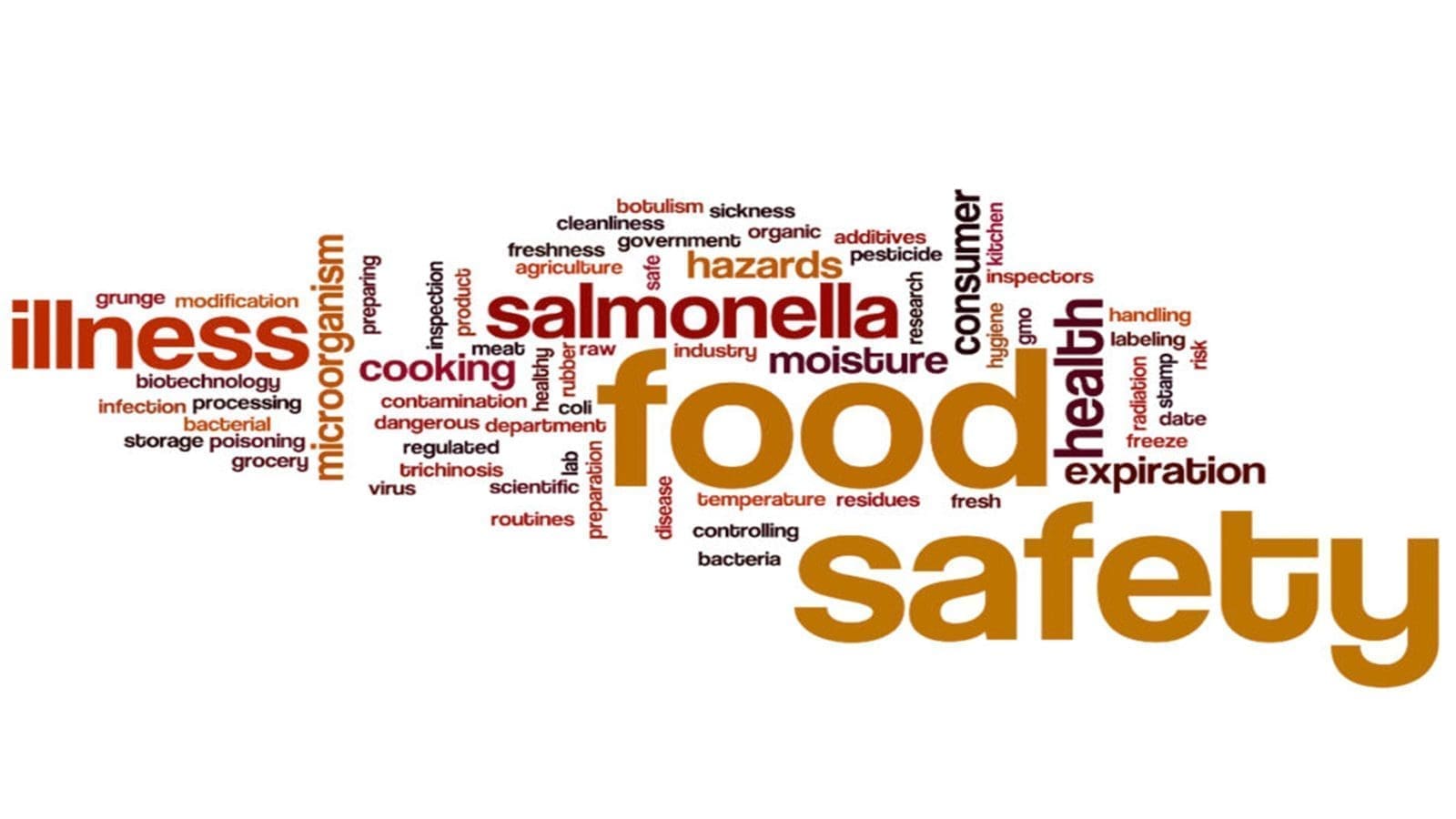FRANCE – The Global Food Safety Initiative (GFSI) has published its first Science and Technology Advisory Group (STAG) Report, which offers an “objective and independent” analysis of recent trends in science and technology that could affect GFSI’s food safety activities and aid in defining a sustainable future for food safety.
The STAG Report focuses on four themes: “Big Data” in food safety, the role of the microbiome in food safety, emerging foodborne pathogens, and the impact of the food system’s resilience on food safety.
“These papers are essential reading if you are looking for an overview or introduction into these crucial areas of science and technology, allowing the food professional to understand why these areas are important, their scope, and likely impact.
“We plan to follow this initial work by forming working groups to “deep dive” into these topics and produce more detailed outputs. Further subjects are also being discussed and other papers written,” David Crean, Chair of the Science and Technology Advisory Group, said.
Each section of the STAG Report was authored by a lead author with feedback and evaluation from the other STAG members.
Before publication, every section was formally reviewed by a distinct independent organization.
The STAG Report offers a general overview or introduction to key scientific and technological fields that are relevant to food safety, enabling the food professional to comprehend these areas’ significance, scope, and potential influence.
Big Data in Food Safety
The STAG Report uses the phrase “Big Data” to describe vast quantities of various forms of data, which have a wide range of uses in the field of food safety. Big Data can be, and often is gathered at every stage of the food supply chain.
Whole genome sequencing (WGS), metagenomics, metabarcoding, sensors, online food safety databases, and data sources, predictive analytics, social media and e-commerce data on the internet, and data collected from farm-to-fork are specific examples of Big Data relevant to food safety highlighted by the STAG Report.
Big Data can be used in conjunction with blockchain, dynamic risk management systems, and supply chain decisions to enhance traceability, recognize and address food safety hazards, and decrease spoilage, respectively.
Furthermore, next-generation sequencing techniques like WGS, metagenomics, and metabarcoding, as well as cataloging the microbiome of food products, can help with the detection and surveillance of foodborne pathogens and outbreaks, regulatory enforcement actions, and spoilage prevention.
Another intriguing instrument that may be used to gather and access real-time data on a product at any point along the supply chain and guide decisions is sensor technology.
Last but not least, social media and portable smart devices might help increase retail food safety by forecasting the possibility of foodborne illness outbreaks.
The STAG Report identified several critical knowledge gaps regarding Big Data and food safety, including data ownership and privacy, interoperability, the ability to identify and link pertinent data, the requirement for standardization of Big Data and genomic methods, adoption barriers for low- and middle-income countries (LMICs), the difficulties of using artificial intelligence (AI) without human intervention, and the limitations of metagenomics.
Big Data could have significant effects on food safety, though, as better knowledge of the variables affecting food safety can help people make better decisions and respond to incidents.
The STAG Report exhorts the food industry to look to the future and think about how Big Data might be used to its advantage.
The Role of the Microbiome in Food Safety
According to the STAG Report, the “microbiome” in terms of food safety refers to the ecological community of commensal microorganisms that can be found in any environmental sample, as well as microbial structures, metabolites, mobile genetic elements like transposons, phages, and viruses, and relic DNA embedded in the habitat’s environmental conditions.
The development of high throughput sequencing (HTS) technologies has greatly advanced our general understanding of the composition and function of the microbiome in various environments and products, as well as, more recently, how it may be advantageously modified or used. Culture-independent approaches to pathogen detection are now possible.
In particular, baseline microbiome monitoring of raw ingredients can detect changes that may be an indication of the safety or quality of an ingredient.
The type of packaging, the processing environment, the makeup of the food matrix, and many other variables can have an impact on a product’s microbiome along the whole production and retail chain.
Additionally, developing cleaning and sanitization procedures can be facilitated by an awareness of the microbial communities that exist in areas where food is processed.
Microbiome analysis can also show that food is real, show how a foodborne disease affects a product, make it easier to find the genes that determine antimicrobial resistance (AMR), and give us a better understanding of how mycotoxins affect the gut microbiomes of both humans and animals.
In order to ensure the safety of food, there are a number of knowledge gaps related to food microbiome analysis that must be filled.
These include figuring out how to control microbial community interactions, which affect pathogen survival; the variation in results caused by the use of various methods and tools; the need for standard operating procedures (SOPs) for industry testing and analysis; and the complexity of utilization and outputs from numerous metages.
The STAG Report advises enterprises to adopt a strong sample plan, with enough sampling to establish a baseline for benchmarking, because the potential for microbiome applications in food production is still enormous.
However, given the enormous potential for microbiome applications in food production, the STAG Report advises enterprises to implement a robust sampling plan, with sufficient sampling to build up a baseline for benchmarking.
Emerging Foodborne Pathogens
In addition to tangential issues, the STAG report highlighted several emerging foodborne diseases of concern.
According to the research, specific emerging foodborne diseases include Norovirus, Campylobacter jejuni, Cronobacter, Cyclospora, Escherichia coli O104:H4, Salmonella enterica serovar Infantis, and Salmonella enterica serovar Typhimurium.
Reoccurring, emerging, and persistent (REP) strains, highly virulent hybrid strains, and multi-drug resistance (MDR) are additional elements that complicate the issue of emerging foodborne pathogens.
Numerous biological, human, and environmental factors, including human demography, consumers, food types, particular pathogens, agriculture and the environment, public health, and social issues, are continually influencing the incidence and prevalence of infectious diseases in humans.
Globalization, which is seen as one aspect of human demographics, is one of the most significant variables affecting the food supply chain, according to the report.
There are notable knowledge gaps regarding AMR, MDR REP pathogens, highly virulent hybrid strains, parasitic pathogens, and the capacity to predict the next emerging pathogens, all of which must be investigated in order to stop outbreaks of foodborne illness and the consequences of such public health occurrences.
The STAG Report advises food businesses and the industry as a whole to decrease the use of antimicrobials on livestock, invest in research to find answers regarding surveillance, detection, ecology, and control, and develop both private and public surveillance systems, use WGS, and combine conventional methods with cutting-edge tools like artificial intelligence, machine learning, and predictive microbiology to lower pathogen levels.
Food System Resilience: Impacts on Food Safety
The STAG Report uses the Food and Agriculture Organization of the United Nations’ (FAO’s) definition of food system resilience, which is: “The ability to prevent disasters and crises as well as to anticipate, absorb, accommodate, or recover from them in a timely, efficient, and sustainable manner.”
Due to the potential long-term effects that changes in the quality or amount of food delivered to populations can have on their health, productivity, and economic growth, food system resilience is essential for ensuring food safety.
Shocks to food systems can directly impact the overall safety of food. The report outlines three ways in which a lack of system resilience can lead to food safety issues:
Shocks might result in a lack of equipment or supplies relevant to food safety. They can also cause bottlenecks that significantly lower production and the incentives to remove them may cause temporary abandonment of best practices and an associated rise in the risk to food safety.
Due to systemic deficiencies that cause malnutrition, people are more susceptible to illness, which raises the frequency and severity of illnesses.
Additionally, the connection between food security and disease can result in loops that harm a community’s or country’s long-term health prospects, particularly in Low- and Middle-Income Countries (LMICs).
Although system resilience is beyond the control of a single firm, the research emphasizes that in order to comprehend the risks to individual enterprises, it is critical to understand how the system will respond to a crisis.
The report identified a number of variables that affect the vulnerability and resilience of the food system, including reliance on a single source of supply or a small number of suppliers; reliance on particular ingredients; existing within longer or shorter supply chains; genetic diversity in produce and livestock; infrastructure quality; various trade factors; flexibility of government regulations; regulatory incentives; and status as an LMIC.
The STAG Report places a strong emphasis on the need to close knowledge gaps regarding how the economics of food system resilience affect food safety, figuring out the best level of resilience, and business and employee responses to crises.
Businesses in the food industry, governments, and communities will all profit from resilient food systems.
The study advises companies to increase their resilience to improve food safety by looking at the causes, solutions, rewards, and effects of food safety failures caused by inadequate resilience.
For all the latest food safety news from Africa and the World, subscribe to our NEWSLETTER, follow us on Twitter and LinkedIn, like us on Facebook and subscribe to our YouTube channel.








